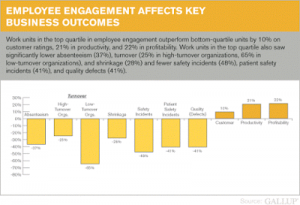— August 22, 2018
Part 1: I Set Up a Business Blog – Now What? Part 1: Generating Ideas
Part 2: I Set Up a Business Blog – Now What? Part 2: Integrating Other Channels
Part 3: I Set Up a Business Blog – Now What? Part 3: Building Your Audience
Part 4: I Set Up a Business Blog – Now What? Part 4: Staying Consistent
If you’ve stuck with us this far, you’ve created a business blog, gotten the creative juices flowing, integrated other channels, built your audience, and conquered consistency. What’s left to do? The hardest part for some and the easiest for others: time management.
If you’re not naturally inclined to effortless time management, this part of the series is for you. If you think you’ve got it under control but this is your first business blog, this part of the series is for you. Time management is not an easy task when you’re juggling a fully-fledged business and a full-time blog. There are proven strategies, however, that successful businesspeople before you have figured out. Now is the time for your team to take these strategies to heart.
Prioritize Your Blog
Unless you make your blog a priority at the company, it simply won’t happen. You might be gung-ho about your business blog in the beginning, only for a year to pass by with only one or two new posts. This common downfall often results in site managers giving up on the idea of a blog altogether. Before you throw in the towel and miss out on all the incredible benefits of having a business blog, rethink your strategy. Odds are, you’re making a cardinal mistake: pushing your blog to the bottom of your priority list.
When you sit down to hammer out your business marketing strategy, make blogging an integral cog in the wheel. According to HubSpot’s State of Inbound 2018 report, marketers that make blogging a priority are 13 times more likely achieve positive returns on investment. It makes sense – those who put the work in are the ones who will reap the most rewards. You will only be able to manage your time in a way that leaves room for running a blog if blogging is on your radar to begin with. Make blogging a chief concern for the best results.
Stock Your Blog Toolbox With Time Management Tools
It shouldn’t come as a surprise that others before you have created tools, systems, and digital platforms to make blogging easier. Some of the most important tools to have in your box involve time management. Programs such as Sendible, for example, promise to turn “chaos to clarity” with automated social media services. You can set up your account to automatically post to separate social media platforms every time you publish a new blog. Automated software can’t write your blogs for you, but it can make marketing easier.
Many new and even veteran bloggers underestimate free tools such as Google Docs. Blogging through Google Docs can offer many time-saving perks, including the ability to conduct research directly from the workspace. The “Research” tab in the Tools menu helps you search for anything without having to leave the page. You can even insert charts, statistics, and infographics straight in Google Docs. It’s a cost effective (free!) platform that can shave minutes off writing each post. Those minutes add up when you’re publishing multiple blogs per week.
Another tool that can be your best friend as a consistent business blogger is an editorial calendar. This is a schedule that will help you keep track of your blog posts from initial concept to the time you publish them on your site. Create an awesome editorial calendar in just a few steps using CEM’s free guide. You’ll receive instructions for how to plan your blog strategy in advance, create a blog calendar that’s consistent with the seasons, and stay on top of regular posting without the stress. Something as simple as an editorial calendar can be instrumental to time management as a business blogger.
Delegate Blogging to Someone Else
The only way to help your business blog thrive is to give it the time, attention, and consistency it deserves. If you can’t personally do this because you’re busy running other aspects of your business, that’s okay. Recognize that you aren’t the ideal person to manage the blog and delegate this task to a trusted person (or even better, team of people). Assigning blog management to a team can ensure the finished product is the best it can be – ultimately obtaining maximum ROI for your blogging investment.
You have the choice of putting together an in-house team or outsourcing the content that makes it to your blog. Before you balk at the idea of outsourcing your blog, realize that this doesn’t mean paying a sweatshop to crank out mediocre content that would fit anybody’s blog. Custom content solutions exist, allowing you to outsource your blog without fretting about quality or personalization. You would stay 100% in charge of what goes on your blog, the topics you discuss, the tone, the style, etc. It would simply be a team of professionals crafting the content on your behalf.
An in-house blogging team might be right for you if you have the manpower and resources to dedicate toward maintaining a regular blog. Keep in mind, however, that blogging can be a full-time position – the equivalent of about a $ 61,000 salary depending on your industry. Not to mention the cost of hiring additional writers, marketers, and social media experts. It is often in a small business’s best interests to outsource something like its blog to experienced professionals, such as those at Content Equals Money.
Enjoy Well-Earned Business Blog Success

Well, you did it! You made it through all five stages of what to do after setting up your business blog. We hope you found the information in this five-part series helpful in cultivating and maintaining a successful professional blog. Just remember, the more you put into your blog, the more you’ll get out of it!
Digital & Social Articles on Business 2 Community
(76)








